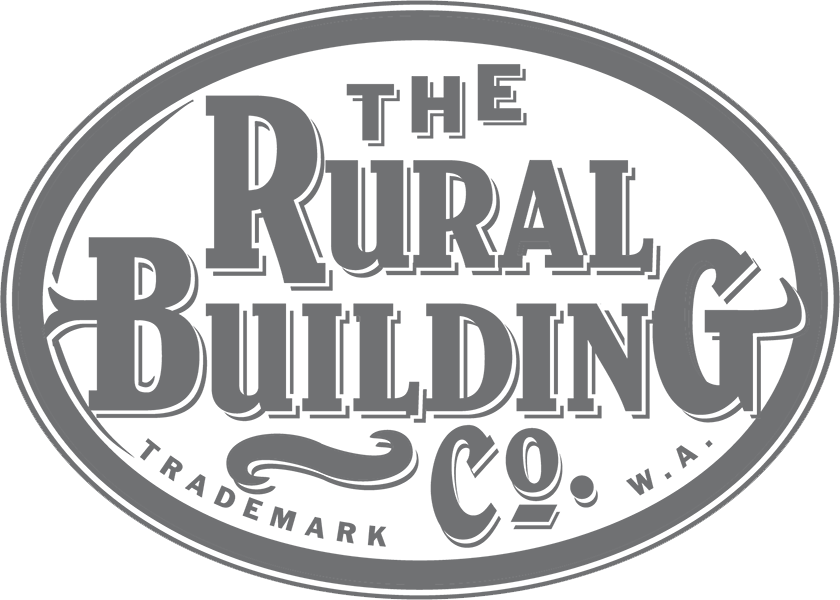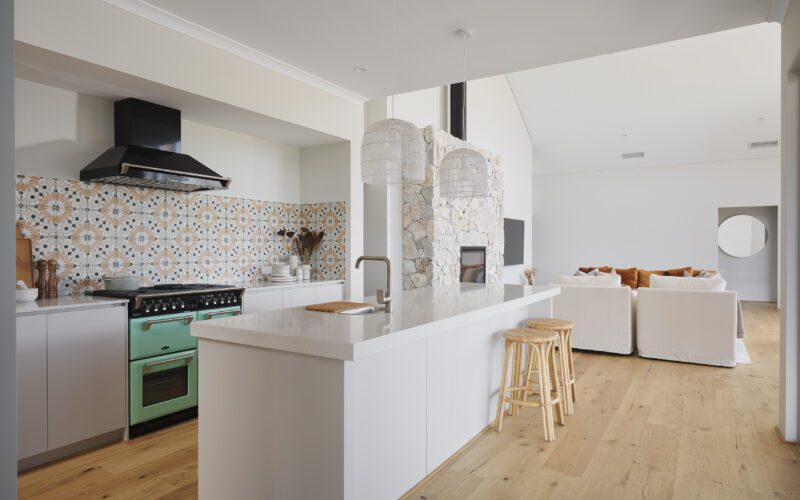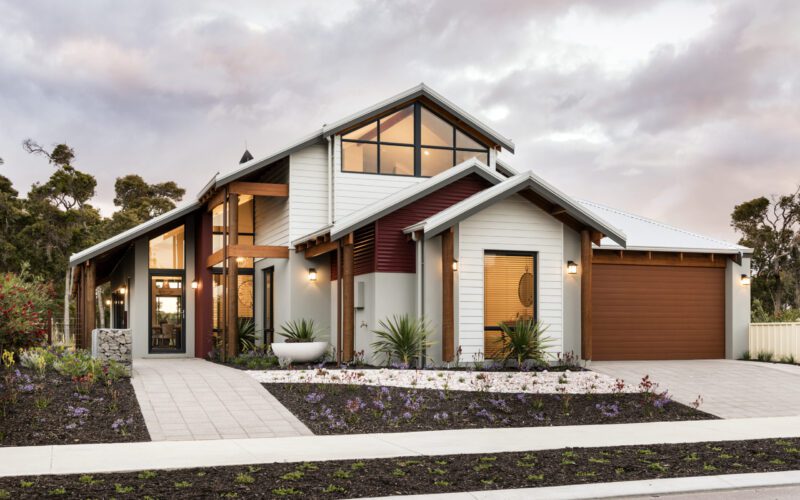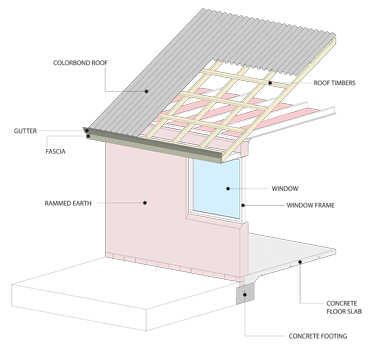
Rammed Earth
This is produced using a mix of soil and cement to obtain an impervious wall. It is built onsite, using formwork to hold the compacted material while it hardens. It is a single layer impervious wall. Although it sounds environmentally positive there are some real issues.
Because of the high level of mass and the direct contact with the external environment, stored heat or cold will be transmitted to the internal environment. Sun contact on a wall will heat the wall up and it will maintain the warmth. This will then be transmitted internally. An unsatisfactory outcome in summer.
It is common practice to provide weather protection by the use of verandahs. Like brick construction internally, it can moderate internal temperatures if used internally.




